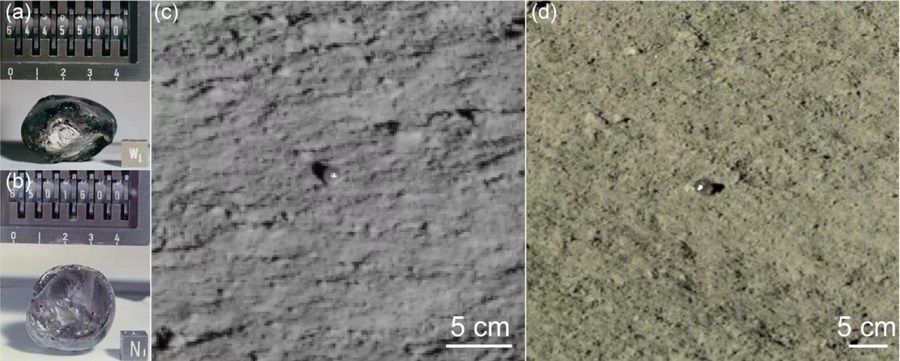China's Chang'e-4 discovers glass globules on far side of moon

Centimeter-sized glass globules collected by the Apollo 16 missions (a, b) and those observed by the Chang'E-4 mission (c, d). (Photo provided to Xinhua)
BEIJING, Feb. 19 (Xinhua) -- The Yutu-2 lunar rover of China's Chang'e-4 mission has discovered two macroscopic translucent glass globules during its exploration of the far side of the moon, which could potentially help reveal the moon's early impact history.
According to a study published in Science Bulletin, the Yutu-2 rover captured images of two translucent globules using its panoramic camera.
No composition data has been obtained for the globules. But their unique morphology and local context suggest they are most likely impact glasses -- quenched anorthositic impact melts produced during cratering events -- rather than being of volcanic origin or delivered from other planetary bodies, the researchers said.
Lunar anorthosite is a major rock of the lunar highlands, which formed in the lunar magma ocean.
The researchers said the globules are different from the glass beads sampled by the Apollo missions, as they are larger in size and exhibit colors.
They predicted that the glass globules would be abundant across the lunar highlands, providing promising sampling targets that could reveal the early impact history of the moon.
The Chang'e-4 probe, launched on Dec. 8, 2018, made the first-ever soft landing in the Von Karman Crater in the South Pole-Aitken Basin on the far side of the moon on Jan. 3, 2019. So far, Yutu-2 has traveled more than 1,000 meters on the far side of the moonrde.
Photos
Related Stories
Copyright © 2022 People's Daily Online. All Rights Reserved.










